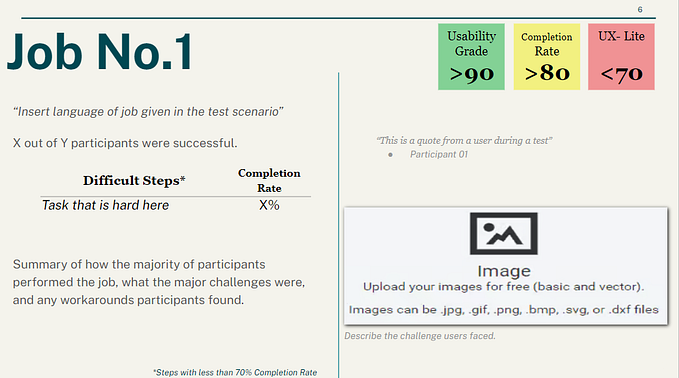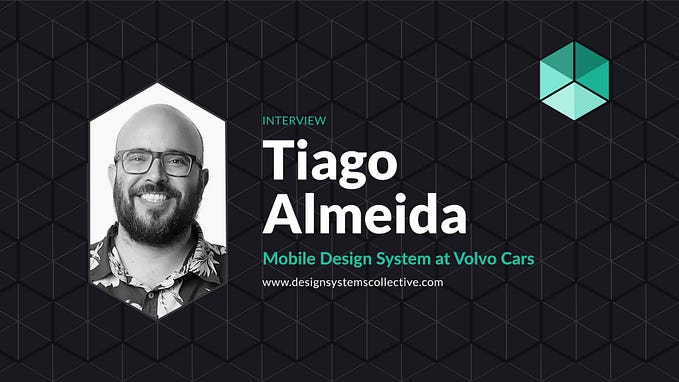Designing for impact

As designers, we talk a lot about the impact our work has on the customers we serve and the businesses we are part of. Not only do we want our work to have purpose and meaning, but we also want it to have a strong, tangible effect on the things we’re trying to change. We want to see tractable results from our efforts and to be able to describe, and better still measure, the contributions of Design in a system of value creation.
So, how can you as a designer have more impact through your work?
Reflecting on my own journey, my perceptions of the discipline of Design have changed over time. Whilst the fundamentals of creating human-centric experiences have always held true, early on in my career the commercial realities and implications of running a viable business were largely absent from my consideration set.
Fast-forward 15 years, having had more exposure to different organisations, situations, personalities and dispositions, I started to form an opinion that an individual’s perspective on Design, and thus their ability to derive meaningful impact by Design, can fall into one of three categories or archetypes:
Design Idealist: The Design Idealist focuses almost exclusively on the artistry and purism of crafting beautiful design work; largely in the absence of any commercial concerns.
Design Agnostic: The Design Agnostic focuses almost exclusively on the business’s commercial goals and financial success; largely in the absence of craft and quality.
Design Pragmatist: The Design Pragmatist operates at the intersection of solving customer problems through the application of Design, to drive desired outcomes for the business.
This model is purely for illustrative purposes and paints a picture of these separate and distinct extremes when in reality, it’s never quite that clear cut. Folks will sit somewhere along that spectrum, likely either biasing more towards the craft of design — which was certainly true of me earlier in my career — or further towards a mindset that favours the application of design to solving business problems.
So how do we, as designers, move past Design being an ideal and an expression of our creativity to the explicit application of Design to solving pressing customer and business problems?
The four elements of Design Impact
The following are what I believe to be four components that illustrate how Design can have greater impact within our respective organisations. In all likelihood, most designers will have had some level of exposure to one or more of these components, but when practised together they form a powerful system for decision-making and value creation.
- Customer (or user) Insight
- Demand Analysis
- Creative Vision
- Product-Thinking
1. Customer (or user) Insight
Customer (or user) Insight speaks to Design’s (inclusive of user research) ability to help an organisation discover, surface and present new opportunities; defining problem spaces, shaping roadmaps and informing solutions. This component (part of the system of impact) is based on the strong belief that insights are opportunities for creativity and innovation.
They reveal the often hidden truths about customers, their behaviours, motivation and needs, which may map to one or more compelling, commercially-aligned growth opportunities. As such, well-formed insights are often the lifeblood of any successful product decision, where the alternative is fraught with bias and conjecture and unlikely to be a good basis on which to spend the company’s time and money.
However, to do this effectively, design needs to push beyond a pure tactical focus and provide the capacity and capability to support ongoing programmes of strategic enquiry. As such, it’s critical to have the systems, tools and resources that enable good, qualitative research to take place.
In the majority of cases, teams will need to support and budget for concurrent streams of generative and evaluative research; allowing them to both discover new opportunities and execute well on those they currently seek to address.
A framework like Emma Boulton’s funnel model allows us to describe and be more explicit about these different streams of research, when they should be deployed and why. You can read more about this in What is a research framework and why do we need one?
Fundamentally, developing a practice that is capable of supporting ongoing streams of Exploratory and Strategic research (generative methodologies) is key to Design’s ability to surface new, valuable opportunities for business growth.
So we if we look at this model in the wider business context, an end-to-end programme of organisational research can operate across three levels of decision-making; each helping narrow in and define the scope of both the offering and specific capabilities within that offering:
1. Shaping portfolios: Research in this space is likely to inform company direction, associated sales and marketing strategies and the shape of a portfolio of products and services.
2. Shaping roadmaps: Research in this space is likely to contribute to a vision and roadmap for a product or service; through the intersection of customer problems and business outcomes.
3. Shaping backlogs: Research in this space is likely to determine a backlog of design and engineering effort required to ship experiments, evaluate the impact and iterate towards a solution.
It’s not uncommon for design teams in many organisations to over-index on tactical efforts, as opposed to undertaking more strategic, or even exploratory research; seeking answers to the more fundamental questions that can inform significant growth opportunities.
However, a seam of new insight and well-framed opportunity is unlikely to have the desired impact and lead to any change in emphasis unless it is part of a wider operating model. We could be doing great research, uncovering new, valuable insights, but to what end?
Our efforts here and how we choose where to spend our valuable discovery time has to be aligned with helping the business answer and challenge its biases and critical assumptions. For research to have impetus and impact it has to be integrated with your organisation’s strategy and planning process.
In this example operating model, you’ll see signals feed into a shared Learning Backlog, reference and/or update foundational artefacts (Personas, JTBD, Value Propositions and Journeys) to provide the data and insight that can inform and support strategic choices; ultimately shaping the vision and roadmap for our products.
Although rarely simple in practice, the principle still stands; for research to really resonate it cannot exist in a vacuum, has to be strategically aligned and is often most effective where it is a product of cross-functional collaboration.
2. Demand Analysis
One of our core values at Redgate is: “We succeed when our customers’ succeed”. But how do we determine success? We can start by deconstructing success into four components, each of which we’ll explore in turn:
Demand: Understanding the progress customers are looking to make in their personal or professional lives.
Supply: Analysing the degree to which your offering helps them make progress/achieve their goals.
Consumption: The customer’s ability to reliably consume and extract value from your offering.
Opportunity: Identifying the gaps in your offering(s) or pains in consumption that present opportunities.
Demand
At Redgate, we use the Jobs-to-be-Done (JTBD) framework to understand customer demand and use that understanding as a model for innovation and product design. Jobs-based research reveals what the market demands (i.e. the progress customers are looking to make) and what’s motivating them to “hire” your product or service.
It enables us to push past focusing solely on a current solution and how to make that better; instead, encouraging us to anchor on the customer and what it would take to enable them to make the progress they are looking for. You can read more about how we adopted JTBD as part of our strategic toolkit in this recent Medium article.
Supply
Once we understand what the market wants, we have the solid foundations for designing new propositions that seek to enable those goals and address specific customer pains. Similarly, for an existing proposition, a stable picture of the landscape of demand allows us to better evaluate the delta between what the market needs and what we currently supply (our propositions).
In either of these scenarios, we can use tools like Job Maps to understand where our products and service fit into people’s lives. Where do we have gaps (at either a portfolio or product level) that may present growth opportunities? This kind of high-level proposition analysis sees us review and critique both current or prospective offerings to see how, where and to what degree we service that demand.
Consumption
The last component to mention briefly is around consumption. Let’s say we have a good picture of demand and a proposition in the market that meets that demand. The job now is to ensure our target customers can consume it and do so in such a way that it provides a great experience. Here, we might use the more traditional tools of Design such a Journey Maps, interviews and analytics to understand to the degree to which customers can realise the value of a given proposition.
Fundamentally, does what we deliver to our customers live up to what we are marketing and selling? Can we reliably help customers along their journeys and towards these key moments of value (serving their JTBD)? How do we ensure they making progress towards their desired outcomes?
Half the strategy is in the execution. So, it’s fundamental that we can understand to what degree customers can acquire, implement, onboard, use and ultimately succeed with an offering. Mapping these experiences and measuring consumption (relative to their JTBD) allows us to determine what success looks like and plot the interactions/behaviour that preclude success.
Opportunity
With this analysis in place (a result of a strong partnering between Product and Design), we can start to orientate around strategic decisions and various growth strategies. Here we use Strategyzer’s Value Proposition Canvas as a great, cross-functional tool for exploring and validating new or alternative propositions.
It provides a visual mapping of the customer segment, their jobs, pains and gains to either a current or future proposition. Using this as a model, that is applicable across all stage of the product lifecycle, we can explore at least three different modes of design relative to where we see the opportunity:
Explore: Exploring new propositions for the target market to address gaps in supply.
Extend: Extending the current proposition to reach new or alternative customer segments.
Enhance: Enhancing a current proposition to better address the JTBD (product fit) of the current segment.
3. Creative Vision
Research and analysis presents us with a customer-centric view of the world. We understand our current position and can see the gap between what we offer today and could offer in the future. The opportunity is opaque. The job of Design is now to turn a vague opportunity into something that is more believable, more tactile, more visceral; something that inspires action.
This is based on a strong belief that designers are uniquely positioned to bring others on a journey of what’s possible. Within us, we possess the tools to help others envision a “North Star” and focus on a desired future experience. We can help close that gap where ambiguity often leads to indecision. To bring the future closer to the present and help enumerate the steps along the way.
Methods like comic strips or storyboards can be used to project and imagine what might be possible; escaping the trap of the now and helping teams traverse anchoring biases. Stories, as we know, are a powerful medium for connecting with folks on a more emotional level and help to bring the customer front and centre — with technology as an enabler, rather than the protagonist.
Similarly, we can use “concept cars” or design fiction to explore radical, new, future concepts. Again, concepts allow us to help others (particularly non-creative types) project beyond the now, temporarily overlook the constraints of practice and technology to bring possibility to life through imagination and creativity. Concepts push past the boundaries of today to imagine and reimagine a possible future.
Lastly, to-be journeys allow us to map, coordinate and direct the desired customer experience; operating across the boundaries and silos of your org structure to chart a course forwards. They provide a blueprint that enables teams and departments to rally towards a better, coordinated customer experience, where your product or service is one aspect of a bigger journey.
4. Product Thinking
So we’ve done some great research, analysed the findings, identified an opportunity and have painted a picture of how that experience might be better in the future. Now what? With each opportunity that presents itself, both the customer and the business has an outcome in mind. The role of design here is to facilitate the execution of that opportunity in a way that both addresses customers’ JTBD and enables a desired business outcome.
Our efforts, as designers, shape other’s expectations of design. In other words, we’re a product of the work we deliver. So if we, as designers, only ever focus on outputs (the “shiny” deliverables), that’s what the business will expect of us. So it’s our job to move beyond that particular association and focus our efforts on the outcomes that matter.
How do we enable the customer to succeed in order for the business to succeed?
If we understand and can explicitly connect our work to specific business outcomes, we can redefine the value of design. We set the expectations of the business, stakeholders and other coworkers, so we have to manage them carefully! Think first about the outcomes you’re trying to influence and then work back from there; such that every customer call, every artefact, every design decision can be tied back to that outcome.
Product Thinking, from a design perspective, is that happy intersect between customer and business. It’s the application of Design to enable great customer outcomes, that drive desired business outcomes. Therefore, to successfully design for impact we need to help teams find the intersect between these two principal concerns.
In practice, at any given point in time, we should be able to see how our efforts ladder up to and support our shared strategic objectives. We are not designing is isolation, we’re designing as part of a system of value, where our ideas and actions should always be in service of value creation.
Always look to sanity check the purpose, intent and desired impact of the work you and your teams are doing. Ask yourselves questions like:
- What are we currently working on day-to-day (initiative)?
- What kind of behaviour(s) are we trying to influence/change (tactical outcomes)?
- Why do we believe idea x will drive behaviour y (hypothesis)?
- If we’re successful, what key measure of success will this drive (strategic outcomes)?
- How will success here contribute to business performance (business impact)?
Bringing it all together!
Bringing it together, the four components outlined in this article form a framework for impact. While each can be seen as discreet and valuable approaches, likely applied differently across a range of scenarios, the sum of the parts is where Design can thrive in the context of modern business.
This is a system of value created, from conception to execution that considers:
- The what is: Bring insights and a customer-centric framing of new opportunities into your planning and strategy process.
- The what now: Partner with Product to analyse demand through the lens of the customer and identify unmet or underserved JTBD (i.e. where demand meets supply).
- The what could be: Use the tools of creativity and design to help others envision what the future might look like were we to tackle these opportunities.
- The what next: Through execution, be super-explicit about connecting design work to key business outcomes; applying Product-Thinking to Design.
To conclude, when we bring these four elements together we, as designers, can start to have more of an impact on our business. This all takes time, focus and effort…but I believe every designer is capable of having more impact.
What could you do tomorrow to be more intentional about how and where you spend your research and design effort?
This post is based on a talk I recently gave of the same name, which is available to watch on Youtube channel.
Cover image courtesy of www.freepik.com.







